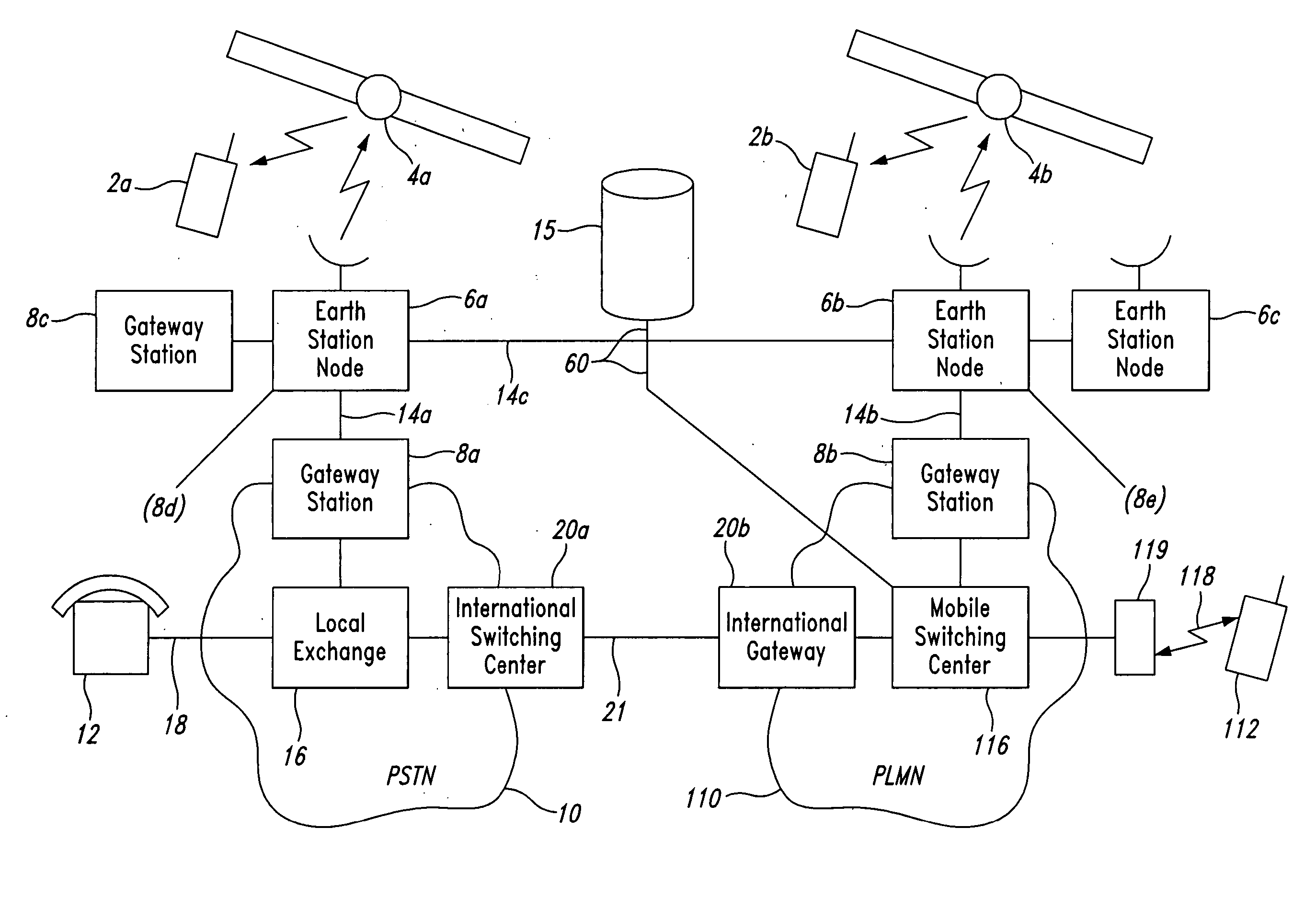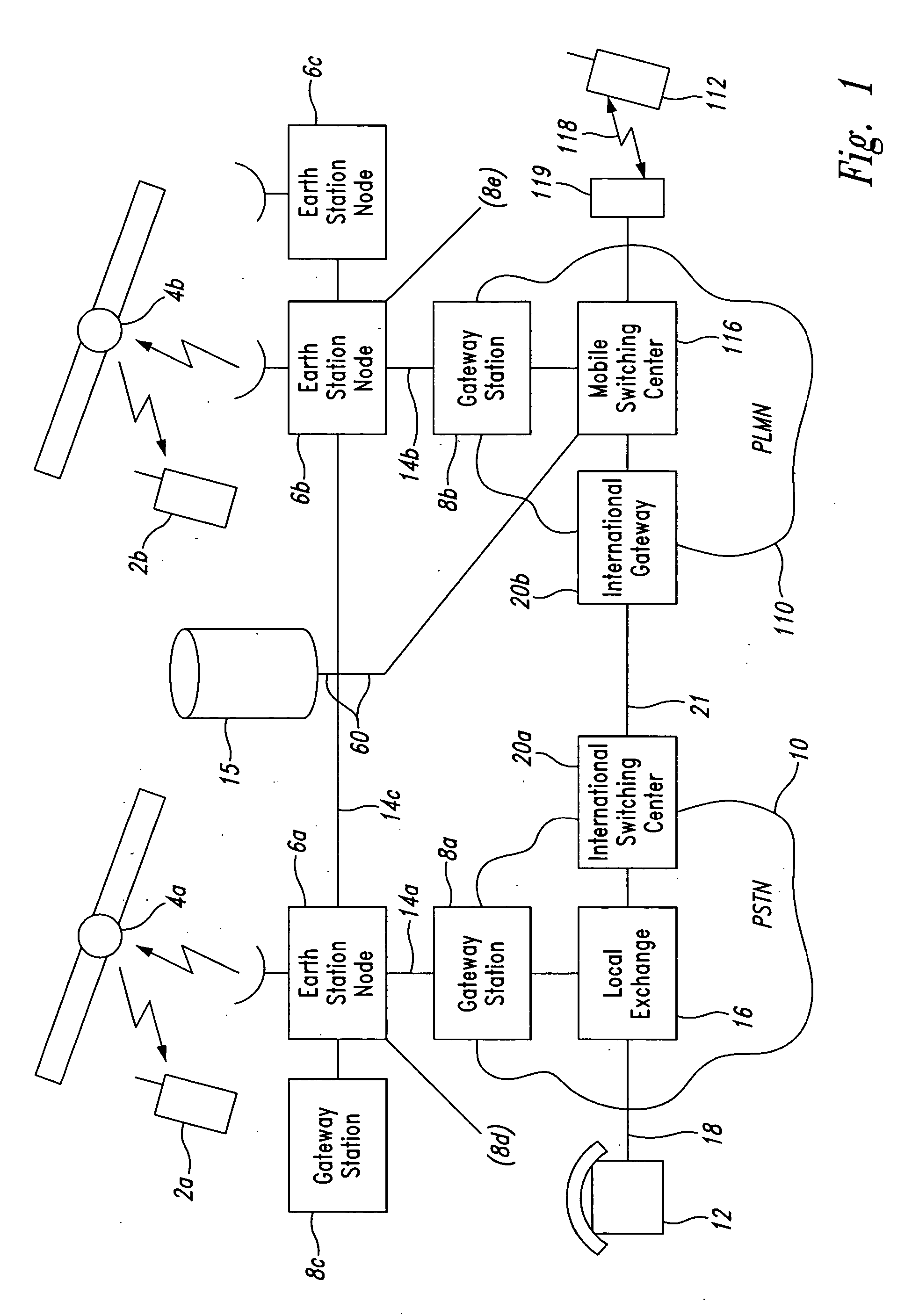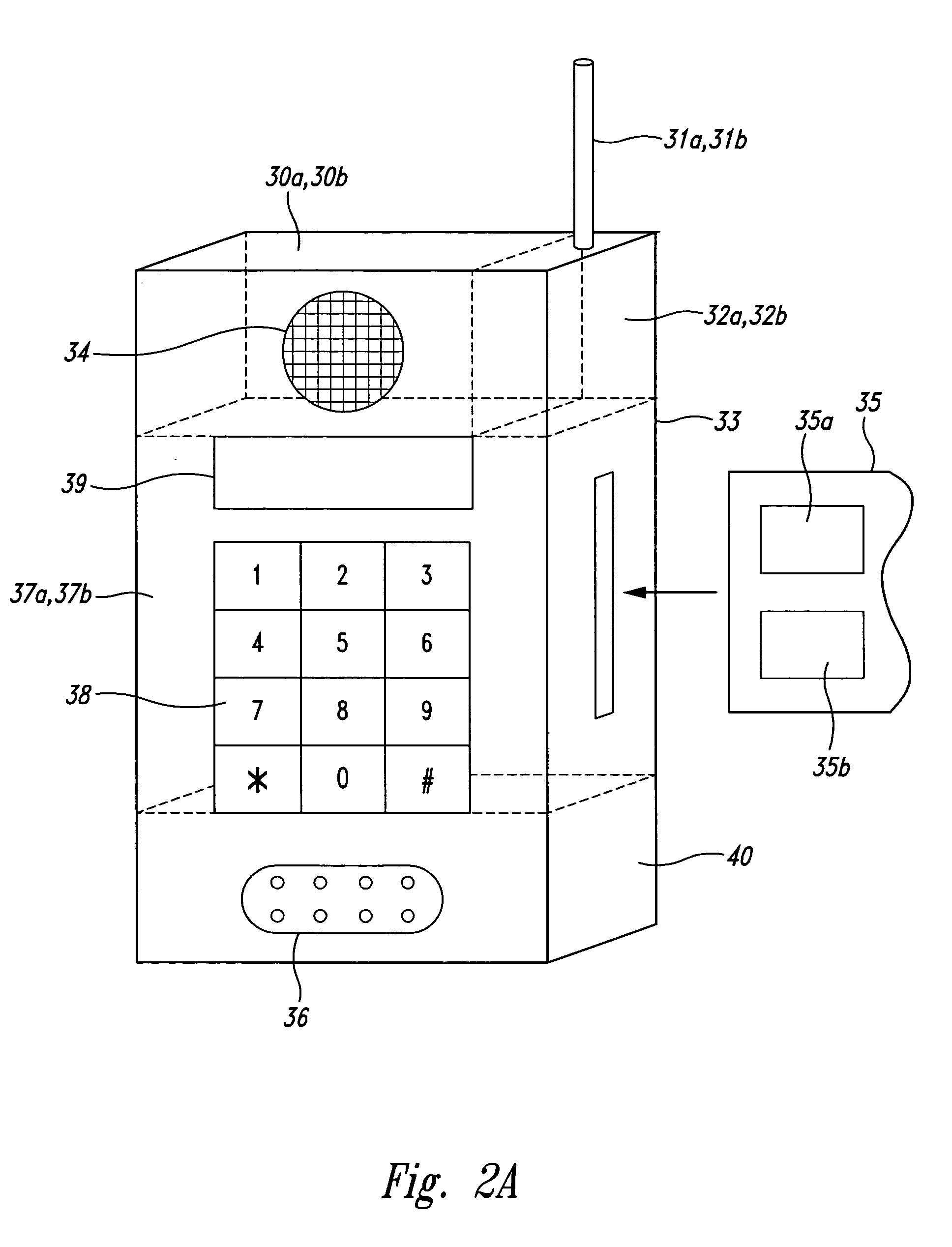Communications apparatus and method
a technology of communication apparatus and method, applied in the field of communication, can solve the problems of ineffective and cost-effective coverage of vast thinly populated rural areas, inability to provide services to users, and inability to meet the needs of users, etc., and achieve the effect of low power, battery and solar cell power available on the satellite, and long path length
- Summary
- Abstract
- Description
- Claims
- Application Information
AI Technical Summary
Benefits of technology
Problems solved by technology
Method used
Image
Examples
first embodiment
[0044] Referring to FIG. 1, a satellite communications network according to this embodiment comprises satellite mobile user terminal equipment 2a, 2b (e.g. handsets 2a and 2b); orbiting relay satellites 4a, 4b; satellite earth station nodes 6a, 6b; satellite system gateway stations 8a, 8b; terrestrial (e.g. public switched) telecommunications networks 10; and fixed telecommunications terminal equipment 12; terrestrial (e.g. public land) mobile telecommunications networks (PLMNs) 110 and terrestrial mobile terminal equipment 112.
[0045] Interconnecting the satellite system gateways 8a, 8b with the earth station nodes 6a, 6b, and interconnecting the nodes 6a, 6b with each other, is a dedicated ground-based network comprising channels 14a, 14b, 14c. The satellites 4, earth station nodes 6 and lines 14 make up the infrastructure of the satellite communications network, for communication with the mobile terminals 2, and accessible through the gateway stations 8.
[0046] A central database...
second embodiment
[0107] Referring to FIG. 7, in this embodiment, the satellite uplink is reused by the second set of base stations 119b in urban areas as a terrestrial uplink, and the satellite downlink is reused by those base stations as a terrestrial downlink.
[0108] As in the preceding embodiment, the between the satellite system and the terrestrial system is similarly small because of the blocking and shadowing effects of buildings.
[0109] In this embodiment, additional measures are taken to limit the interference from the satellite user terminals into terrestrial base stations (satellite uplink into terrestrial uplinks), by providing that the satellite user terminals detect a signal indicating the possibility of interference, and in response cease to transmit satellite signals on the interfering channels and use non-interfering channels where available.
[0110] Again, in this embodiment, it is envisaged that most of the satellite user terminals are dual mode terminals. Referring to FIG. 8, in th...
third embodiment
[0128] Referring to FIG. 9, in this embodiment, the frequency reuse of the previous embodiment is reversed. That is to say, the satellite uplink is reused by the terrestrial downlink and vice versa. Thus, transmissions in the downlink from the satellite do not affect the terrestrial handsets, but could be received by the terrestrial base stations 119b. Each such base station can, however, be protected from transmission from above by an overlying metal plate, or by suitably designing the antennas to reduce the gain and sidelobes in higher elevation angles and also by pointing the antennas tilted down from the horizontal.
[0129] Thus, such shielding or beam shaping, in addition to the shadowing and blockage caused by the deployment of the base stations 119b indoors and in urban areas, substantially reduces the power levels on the satellite downlink reaching the base stations 119b.
[0130] For similar reasons, and because the antennas of the base stations 119b are intended to broadcast ...
PUM
 Login to View More
Login to View More Abstract
Description
Claims
Application Information
 Login to View More
Login to View More - R&D
- Intellectual Property
- Life Sciences
- Materials
- Tech Scout
- Unparalleled Data Quality
- Higher Quality Content
- 60% Fewer Hallucinations
Browse by: Latest US Patents, China's latest patents, Technical Efficacy Thesaurus, Application Domain, Technology Topic, Popular Technical Reports.
© 2025 PatSnap. All rights reserved.Legal|Privacy policy|Modern Slavery Act Transparency Statement|Sitemap|About US| Contact US: help@patsnap.com



